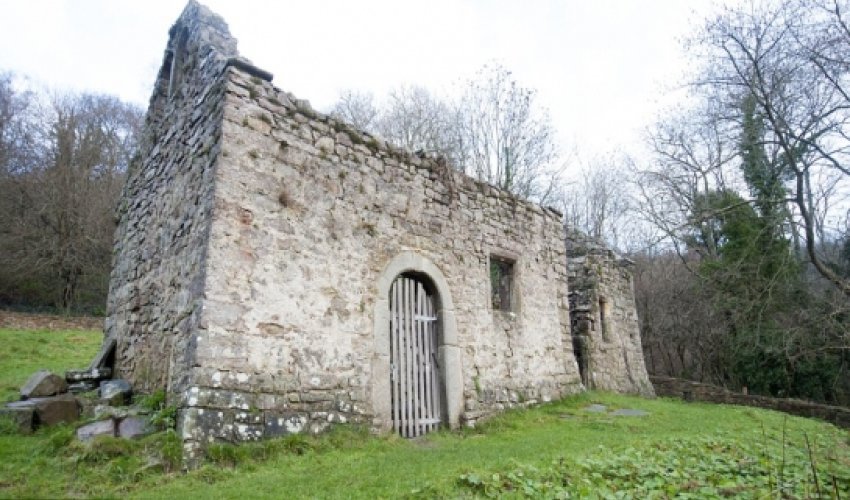Queen sells church dating back to before the Norman Conquest

St James's Church stands in an abandoned hamlet on the banks of the River Wye, and came close to falling apart as the area became wild and overgrown.But the Crown Estate, which manages £8billion worth of land belonging to the royal family, has sold it for a nominal sum on condition that it is returned to its former glory.The church, in the now disappeared village of Lancaut in Gloucestershire, has been bought by the Forest of Dean Buildings Preservation Trust.They will spend £50,000 to 'stabilise' the 12th-century church, whose origins lie in the Anglo-Saxon period, and preserve it for future generations.Trust chairman Jim Chapman said: 'It is a hugely important building and its isolation is one of its joys.'There was once a little community there. Traces of former buildings can be identified and there are headstones in the churchyard.'But now it just looks idyllic, like a little snapshot of days gone by.'The church, believed to be one of the oldest buildings in Gloucestershire, is being examined by officials from English Heritage.Restoration experts will be brought in to plan how the church can be saved for future generations.The Trust has already secured funding from an environmental trust to enable builders to carry out a programme of stabilisation. Mr Chapman said: 'It is an important and valuable asset - its roots are certainly pre-Norman and perhaps even earlier. 'We hope further investigation will reveal significantly more of its ancient past.'Historical sources suggest that there was a church at Lancaut as early as the year 625, although the present building was constructed in the 12th century, not long after the coming of the Normans to England.It is thought to have had some connection to nearby Tintern Abbey, a Cistercian foundation which was abandoned after the reformation and made famous by a William Wordsworth poem.One theory suggests that it may once have been a leper colony, which would explain the presence nearby of medicinal herbs such as green hellebore.The village of Lancaut had 10 houses in 1306, but in 1750 there were only two inhabited properties.By the 19th century the church congregation was so small that services were only held in the summer months. It was finally abandoned in 1865.The roof and the interior fittings, together with the font, were removed, while the elements chipped away at the building making it appear increasingly desolate.The lead font can be dated to between 1120 and 1140 and is now in the Lady Chapel at Gloucester Cathedral.Work on restoring the building is expected to start this summer.The hamlet now forms part of a nature reserve, with both the river and the nearby woodland providing an important habitat for wildlife.Among the animals found the Wye near Lancaut are porpoises, otters and herons, while the forest is home to a number of rare plants, with the absence of people allowing the area to become a natural haven.(dailymail.co.uk)ANN.Az




































 Photo
Photo 



 Video
Video 

